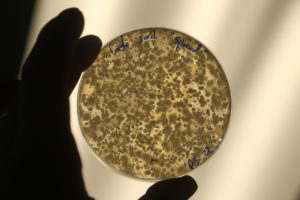By Fred Nichols
Chief Marketing Officer,
Bio Huma Netics, Inc.
 Curly fries, waffle fries, spicy fries or… regen fries? Soon, these may all be choices in the frozen foods aisle, at least if McCain Foods has a say in it. And as the world leader in prepared potato products, purchasing 6.8 million tons of spuds annually, McCain carries a strong voice. Their commitment to sustainability includes a pledge to have regen ag practices used on all their potato acres by 2030. The company has entered the Metaverse and designed this virtual game where players grow their own potatoes and learn about regen practices. Thus far, a staggering 2.8 billion visitors—that’s about one-third of the world’s population—have experienced “Farms of the Future.” All-natural, humic-based crop nutrients may soon become a key ingredient in the recipe for regen fries. [Read more…]
Curly fries, waffle fries, spicy fries or… regen fries? Soon, these may all be choices in the frozen foods aisle, at least if McCain Foods has a say in it. And as the world leader in prepared potato products, purchasing 6.8 million tons of spuds annually, McCain carries a strong voice. Their commitment to sustainability includes a pledge to have regen ag practices used on all their potato acres by 2030. The company has entered the Metaverse and designed this virtual game where players grow their own potatoes and learn about regen practices. Thus far, a staggering 2.8 billion visitors—that’s about one-third of the world’s population—have experienced “Farms of the Future.” All-natural, humic-based crop nutrients may soon become a key ingredient in the recipe for regen fries. [Read more…]

 The Agricultural Retailers Association (
The Agricultural Retailers Association ( As I begin to write, I’m reminded of an excerpt from Ode to the West Wind — “If winter comes, can spring be far behind?” Well, spring is certainly not far behind, especially for those of us working in the agriculture sector.
As I begin to write, I’m reminded of an excerpt from Ode to the West Wind — “If winter comes, can spring be far behind?” Well, spring is certainly not far behind, especially for those of us working in the agriculture sector. In a research study, originally published in Frontiers in Plant Science, May 2021, Vol. 12:660224, the biostimulant properties of humic acid (HA) were tested on Micro Tom tomato plants under increasing nutritional stress. The results confirmed the positive role humic acids play in enhancing nutrient efficiency uptake in plants.
In a research study, originally published in Frontiers in Plant Science, May 2021, Vol. 12:660224, the biostimulant properties of humic acid (HA) were tested on Micro Tom tomato plants under increasing nutritional stress. The results confirmed the positive role humic acids play in enhancing nutrient efficiency uptake in plants. Most of the work on agricultural applications of humic substances (HS) has focused on their biostimulant effects on plants. Far less work has been conducted on the effects of HS on soil microbial populations. It’s not surprising to learn, from the few studies that have been published, that HS also stimulate the growth of soil bacteria, even the bacteria that inhabit earthworm digestive tracts. One of the most important discoveries is that many species of soil bacteria are able to grow on humic acid (HA) as their sole carbon source (
Most of the work on agricultural applications of humic substances (HS) has focused on their biostimulant effects on plants. Far less work has been conducted on the effects of HS on soil microbial populations. It’s not surprising to learn, from the few studies that have been published, that HS also stimulate the growth of soil bacteria, even the bacteria that inhabit earthworm digestive tracts. One of the most important discoveries is that many species of soil bacteria are able to grow on humic acid (HA) as their sole carbon source (
